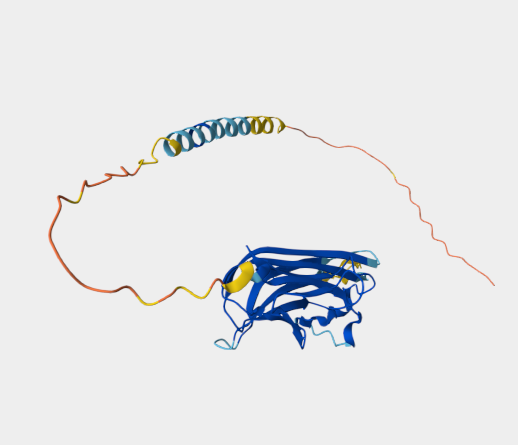Key features and details | |
Cat. No. | MABL-3099 |
Name | Anti-TL1A mAbs |
Clone No. | AFD- TAN2-2 |
From | Recombinant Antibody |
Isotype | Engineer antibody |
Application | Blocking, therapeutic, FC, IF |
Species Reactivity | Mouse |
Basic Information | |
Specificity | This antibody is specific for TL1A, a member of the TNF ligand family. TL1A is expressed by endothelial cells, tissue macrophages, monocyte-derived dendritic cells, plasma cells and lamina propria- derived lymphocytes. Among peripheral blood cells, TL1A has been shown to be expressed predominantly by CD4+CCR9+ lymphocytes. Its expression has been shown to be induced by TNF alpha, IL-1 alpha and IFN gamma. |
Alternative Name | Tnfsf15; bM20K13.3 (tumor necrosis factor (ligand) superfamily, member 15); MGC129934; MGC129935; TL1; TNF ligand-related molecule 1; TNF superfamily ligand TL1A; tumor necrosis factor (ligand) superfamily member 15; tumor necrosis factor (ligand) superfamily, member 15; tumor necrosis factor ligand 1B; Tumor necrosis factor ligand superfamily member 15; Vascular endothelial cell growth inhibitor; vascular endothelial growth inhibitor; vascular endothelial growth inhibitor-192A; VEGI; VEGI192A |
UniProt | Q5UBV8 |
Immunogen | This antibody was raised by immunising rats with a soluble recombinant TL1A (T77-L252):Fc protein. |
Application Notes | This antibody has been used in FACS analyses to reveal the role of TL1A in humoral immune responses and its mechanism of action in the development of collagen-induced arthritis (Wang et al, 2013), and in immunofluorescence confocal microscopy to demonstrate how chronic DR3 signaling could promote pathogenesis in inflammatory bowel disease (Taraban et al, 2011). The therapeutic potential of this antagonistic anti-TL1A antibody in countering the DR3–TL1A pathway in the inflammatory joint disease has been confirmed in both of the murine adjuvant-induced arthritis (AIA) and collagen-induced arthritis (CIA) models (Bull et al, 2008). In addition, this antibody has been demonstrated to prevent chronic colitis and attenuate established colitis by down-regulation of both T-helper 1 and T-helper 17 activation (Takedatsu et al, 2008). |
Antibody First Published | Bull Melanie et al. The Death Receptor 3–TNF-like protein 1A pathway drives adverse bone pathology in inflammatory arthritis. J Exp Med. 2008 Oct 27;205(11):2457-64. PMID:18824582 |
Note on publication | Describe the original generation of this antibody and its applications in two murine models of arthritis to demonstrate that the Death Receptor 3-TNF-like protein 1A (DR3-TL1A) pathway drives adverse bone pathology in inflammatory arthritis and represents a potential novel target for therapeutic intervention in inflammatory joint disease. |
COA Information (For reference only, actual COA shall prevail) | |
Size | 100 μg Purified antibody. |
Concentration | 1 mg/ml. |
Purification | Protein A affinity purified |
Buffer | PBS with 0.02% Proclin 300. |
Concentration | 1 mg/ml. |
Storage Recommendation | Store at 4⁰C for up to 3 months. For longer storage, aliquot and store at - 20⁰C. |



